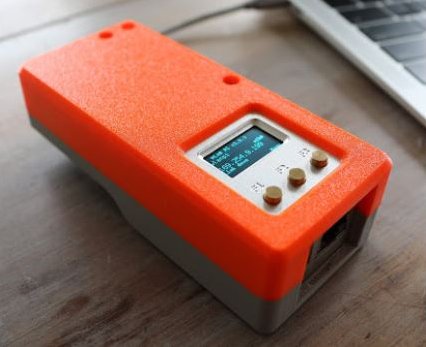Getting Started with the WLAN Pi
Note that this documentation is for the deprecated version 1 software image of the WLAN Pi
Building Your Own Kit
Rolling your own WLAN Pi takes a little more work than a pre-built kit, but with a little effort, you can source all of the parts and put one together.
Here is a list of the items you are going to need to source to build your own WLAN Pi:
- A NanoPi NEO2 from the FriendlyArm company (located in China): this is the WLAN Pi hardware platform itself (Note that this comes with a micro-SD card, so you do not need to purchase a separate card unless you want a spare)
- A Comfast CF-912 USB wireless adapter: this is the currently recommended adapter to support the various wireless operations that the WLAN Pi supports (you can usually get these fom eBay or Amazon)
- An micro-SD to USB adapter module to allow images to be burned on to the WLAN Pi (easily sourced fom Amazon)
- A USB to micro-USB cable to power and/or provide connectivity to the WLAN Pi (the flavour of USB cable will depend on your requirements)
Optional extra items:
- A power supply. The Raspberry Pi PSUs work fine with the WLAN Pi and are readily available from Amazon (Note that you can also use your USB to micro USB cable with a phone charger PSU in many cases if you'd prefer not to buy a dedicated PSU)
- POE Splitter. If you'd like to power your WLAN Pi from a switch POE port, a splitter is just what you need. However, ensure that you buy a splitter that supports Gigabit-Ethernet, as many low-cost POE splitters are only 100mbps Ethernet (which is not great when you are using the WLAN Pi for speedtests or iperf).
- Lithium battery (in case you want to leave the WLAN Pi powered on for a few hours somewhere)
- Extra micro-SD card (in case you'd like a spare for different image versions or customizations)
- Custom Handheld Case: Designed specifically for use with the WLAN Pi, houses the Wi-Fi adapter and USB-C cable, while still exposing the USB port and ethernet port on the bottom, while still allowing access to the MicroSD slot - a great additon to make the WLAN Pi in to a true hand-held tester! (Created by Joel Crane @Potato_Fi

More info: http://www.potatofi.com/2019/10/the-wlan-pi-handheld-case.html
(Note: some the the links on this page are Amazon affiliate links)
Last update: October 4, 2020